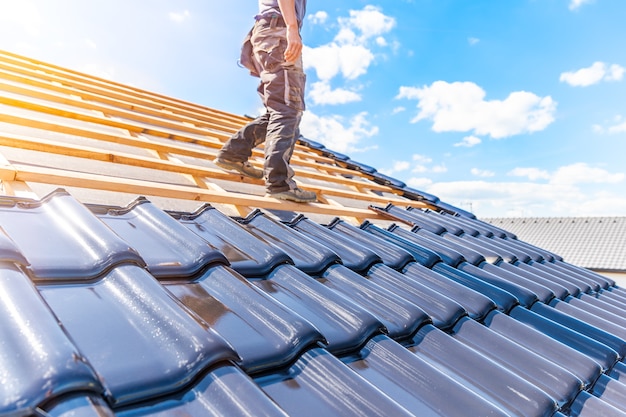What is Pitch on a Roof?
by Admin

Roof pitch, or slope ratio as it is sometimes called, measures the rise of span over height. It is an important factor when deciding what type of material to use.
For measuring roof pitch, a spirit-level and tape measure are both effective tools. However, apps make the process even easier.
Pitch refers to the slant or angle of the roof
Roofs all share one common feature: pitch. Pitch is defined as the degree of slope within a roof's slope. This determines how many materials are needed to cover a particular roof. You can use a roof calculator or a slant level to measure the roof pitch. Roofs with steeper pitches will be more noticeable.
Roof pitches, or roof slopes, are expressed as a ratio. The first number represents both the rise and run of the roof.
Low-pitched roofs that are less than 4:12 in pitch can be dangerous. They may require special roofing material to ensure safety. Conventional sloped roofs (those with a pitch between 4:12 and 9/12), are much easier to maintain, and more cost-effective than their flat counterparts.
It determines which material to use
Roof pitch, also called slope or tilt, determines which roof materials and materials can go on them. Though it may not seem important, its effects can have a significant impact on home life. The slope of most homes is between 4/12 and 6/12. Lower numbers are for mild slopes; higher numbers are for steeper ones.
Pitch, which is displayed as 12 as the numerator, is the ratio between the rise and span of the exterior walls of any roof.
A good roofer first calculates the pitch, then multiplies it by its incline factor to account extra material in construction. The roofer ensures that the roof can withstand extreme weather conditions while delivering optimal performance. Using the correct slope also helps eliminate future problems including leaks and mold.
It is a hazard to safety
If used incorrectly Pitch can pose a serious risk to safety, leading to eye irritation, burns and other injuries. Petroleum-based pine pitches (which contain rosin as their main component) are flammable. Inhaling them can lead to asthmatic symptoms. Pine pitch may irritate the skin and removal agents may release toxic fumes.
Roof materials can only be installed in specific roof pitches. It's vital that homeowners know this limitation before they replace or repair shingles. Asphalt composites can only be installed in roofs with a 12/12 pitch. Other materials might work for lower pitches, but will need special application techniques to stop leaks.
For steep roofs, it is essential to secure the shingle bundled and use fall protection equipment. This will help prevent slipperiness. Additionally, it's important to maintain a clear sight line so that they can avoid obstacles like ridges vents and chimneys.
It is part of the design
Roof slope and pitch have different meanings. Slope is calculated by dividing the roof's span by its pitch.
Roof pitch is important for water drainage, roof design and material selection. A steeper roofing can handle snowfall much better than its counterpart. It will also give you more headroom. High-pitched rooftops tend to be more attractive while costing less to build. Yet, they can also cost more.
5R Roofing
Roof pitch, or slope ratio as it is sometimes called, measures the rise of span over height. It is an important factor when deciding what type of material to use. For measuring roof pitch, a spirit-level and tape measure are both effective tools. However, apps make the process even easier. Pitch refers to the slant…
Recent Posts
- Lawn Care Spring Branch Advocates for Property Care: Combatting Weed Growth and Preserving Curb Appeal
- Lawn Care Spring Branch Advocates for Property Care: Combatting Weed Growth and Preserving Curb Appeal
- Exploring the Benefits of Cavco Homes: Why They’re a Popular Choice for Homebuyers
- Lawn Care Spring Branch Advocates for Property Care: Combatting Weed Growth and Preserving Curb Appeal
- Understanding Roof Replacement vs. Repair: When is it Time for a New Roof in Lexington?
